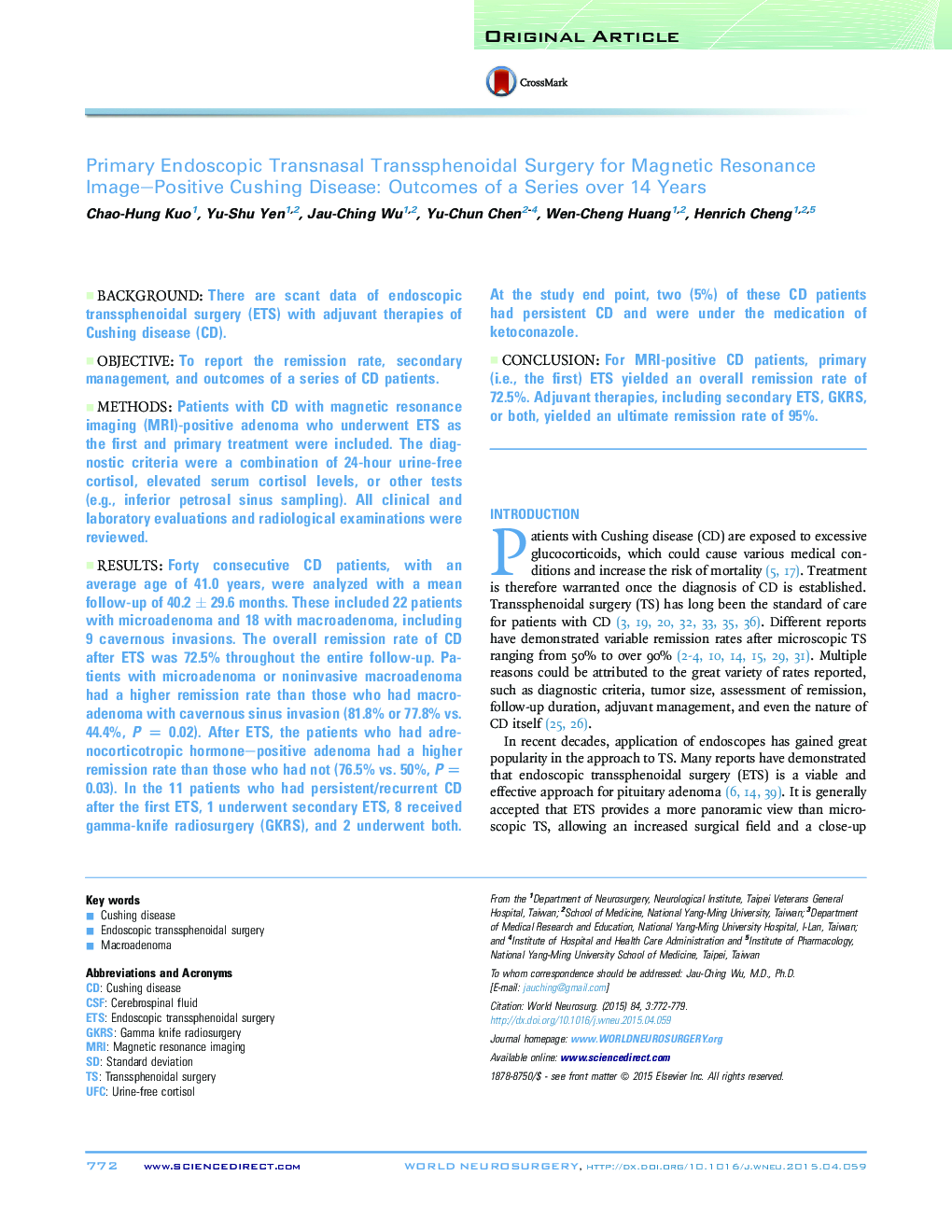| Article ID | Journal | Published Year | Pages | File Type |
|---|---|---|---|---|
| 6045409 | World Neurosurgery | 2015 | 8 Pages |
BackgroundThere are scant data of endoscopic transsphenoidal surgery (ETS) with adjuvant therapies of Cushing disease (CD).ObjectiveTo report the remission rate, secondary management, and outcomes of a series of CD patients.MethodsPatients with CD with magnetic resonance imaging (MRI)-positive adenoma who underwent ETS as the first and primary treatment were included. The diagnostic criteria were a combination of 24-hour urine-free cortisol, elevated serum cortisol levels, or other tests (e.g., inferior petrosal sinus sampling). All clinical and laboratory evaluations and radiological examinations were reviewed.ResultsForty consecutive CD patients, with an average age of 41.0 years, were analyzed with a mean follow-up of 40.2 ± 29.6 months. These included 22 patients with microadenoma and 18 with macroadenoma, including 9 cavernous invasions. The overall remission rate of CD after ETS was 72.5% throughout the entire follow-up. Patients with microadenoma or noninvasive macroadenoma had a higher remission rate than those who had macroadenoma with cavernous sinus invasion (81.8% or 77.8% vs. 44.4%, P = 0.02). After ETS, the patients who had adrenocorticotropic hormone-positive adenoma had a higher remission rate than those who had not (76.5% vs. 50%, P = 0.03). In the 11 patients who had persistent/recurrent CD after the first ETS, 1 underwent secondary ETS, 8 received gamma-knife radiosurgery (GKRS), and 2 underwent both. At the study end point, two (5%) of these CD patients had persistent CD and were under the medication of ketoconazole.ConclusionFor MRI-positive CD patients, primary (i.e., the first) ETS yielded an overall remission rate of 72.5%. Adjuvant therapies, including secondary ETS, GKRS, or both, yielded an ultimate remission rate of 95%.
